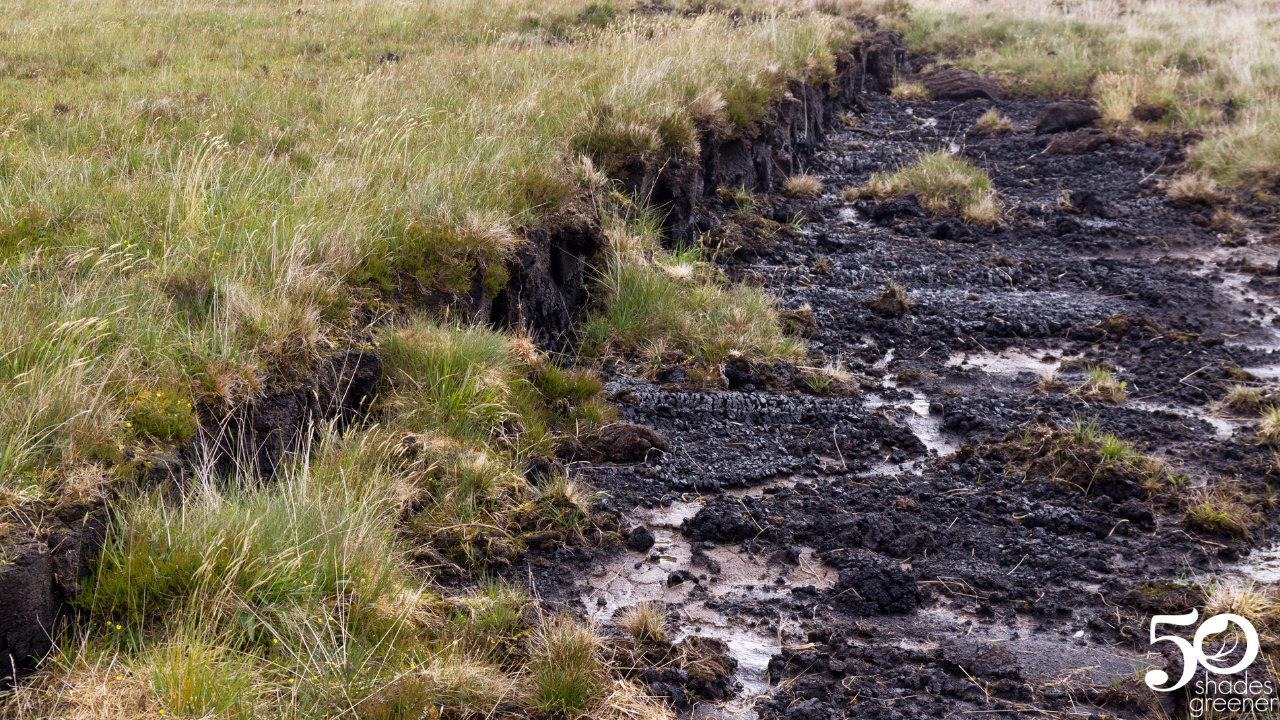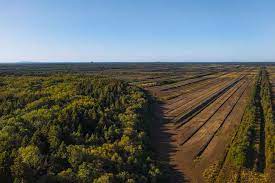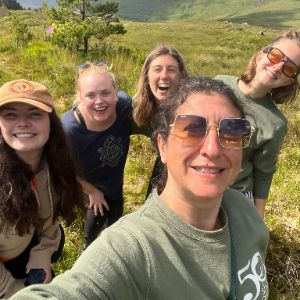For Peats Sake, can we leave it alone?
Jan 10, 2022
Ireland has much work to do in 2022 to implement solutions to curb the colossal CO2 emissions from our Island’s overuse of resources. In my quest to research other solutions that weren’t tree planting, I landed on the bog!
A day cutting turf is an age-old tradition in Ireland and has cultural importance, but our commercial destruction of these natural habitats and carbon sinks have created a hugely negative impact on our environment over the years.
Approximately 21% of Ireland is covered by peatlands, which are second only to the ocean in their capacity for carbon storage. They can also store 20 times more carbon than a forested area of the same size.
Water is a key ingredient in peat (approx. 90 – 95% of its content): the carbon of the decomposing material is stored by becoming waterlogged and “sequestered” in the peat, rather than being released into the air. The main challenge faced in the conservation of Irish bogs is that they have been drained of their water to extract their peat, or for the land to be used for another purpose e.g. agriculture.
“Draining peatlands is estimated to release around 1.3 gigatons of CO2 into the atmosphere a year, which means it's behind around 6% of global human-made carbon emissions or 1.5 times the amount produced by air travel."
In Ireland 80% of peatlands have been degraded. With this degradation comes the loss of plant and animal diversity, endangering of species such as the corncrake, curlew, lapwing, etc., loss of water filtration, loss in the regulation of the water supply and flood control; as bogs lose their ability to act like sponges.
The commercialisation of our peatlands is coming to an end and the rehabilitation of bogs beginning– with over 82 bogs identified by the bog Rehabilitation Scheme (gov.ie - Bord Na Móna Bog Rehabilitation Scheme and €180 million pledged to this effort to stop the release of carbon from these exposed bogs.

Bord na Mona, owners of 5% of Ireland’s peatland, scaled down their supply of peat to the energy sector but they still supply the horticultural industry - which is dependent on peat as a growing medium.
In the past Ireland had a number of cases taken against it for “alleged infringements of EU law in the management of its peatlands”, afforestation and draining being in these cases. The government’s land-based, climate change mitigation plan for 2021 relies heavily on afforestation. In Ireland to date, 19% of peatland have been afforested. Tree-planting in peatland areas act like “wicks” to the carbon stored below. With Coillte, Ireland’s forestry body, owning 11% of peatlands in Ireland, I question; will the different government bodies collaborate effectively to avoid afforestation in peatland areas so their conservation efforts will not be in vain?
Approximately 77% of Irish peatlands are in the hands of farmers and landowners. There is a need for community consultation and widespread sharing of the benefits of preserving peatland area so that we can redress the issue of bog degradation. It is expensive to undertake the work of rewetting the bogs so preserving that which is left is paramount and collaborations are needed. Also, ensuring that, with good intentions, landowners are not planting trees on peatlands without realising the adverse effects is essential too.
A great example of community collaboration is a conservation effort in Mayo where 50 acres of peatbog has been restored by rewetting through drain blocking, in partnership between a local farmer, the company John Sisk & Son and Green Restoration Ireland (GRI). For companies to get involved, this is a great CSR project and there is the incentive of a voluntary carbon credit they can now avail of too.
“36,000 tonnes of carbon will be permanently locked into the Lackaduff bog and 20-30 tonnes of carbon dioxide emissions will be avoided annually”,
An adjacent river will benefit as dissolved organic carbon will be reduced by 90% from entering the water through the work that has been done. This also has a positive knock-on effect for the biodiversity in the area as it preserves the habitats of rare species.
This is the work of one collaboration. My hopes are that with more people taking personal responsibility and engaging in collaborative, well guided projects, we can have a positive impact which is solution and community based.
To learn more about the Mayo Bogs project and others, visit Green Restoration Ireland's page;
https://greenrestorationireland.coop/#
To learn more about how you can reduce your carbon emissions - visit our page for more information on our environmental training programmes;
https://www.fiftyshadesgreener.ie/carbon-emissions-management
Thank you for reading our piece today! The FSG Team 💚

References;
- End of an era: Ireland says goodbye to peat to restore its biodiverse bogs | Global Ideas | DW | 16.10.2021
- Signpost_series_v5 (teagasc.ie
- www.gov.ie
- A Review of the Use of Peat in the Horticultural Industry - Key Issues Consultation Paper (npws.ie
- NationalPeatlandsStrategy2015EnglishVers.pdf (npws.ie
- 50 Acres of peat bog restored in Co.Mayo - Green Restoration Ireland
- https://www.bordnamona.ie/bord-na-mona-and-coillte-collaborate-to-transform-1500-hectares-into-native-woodland/



